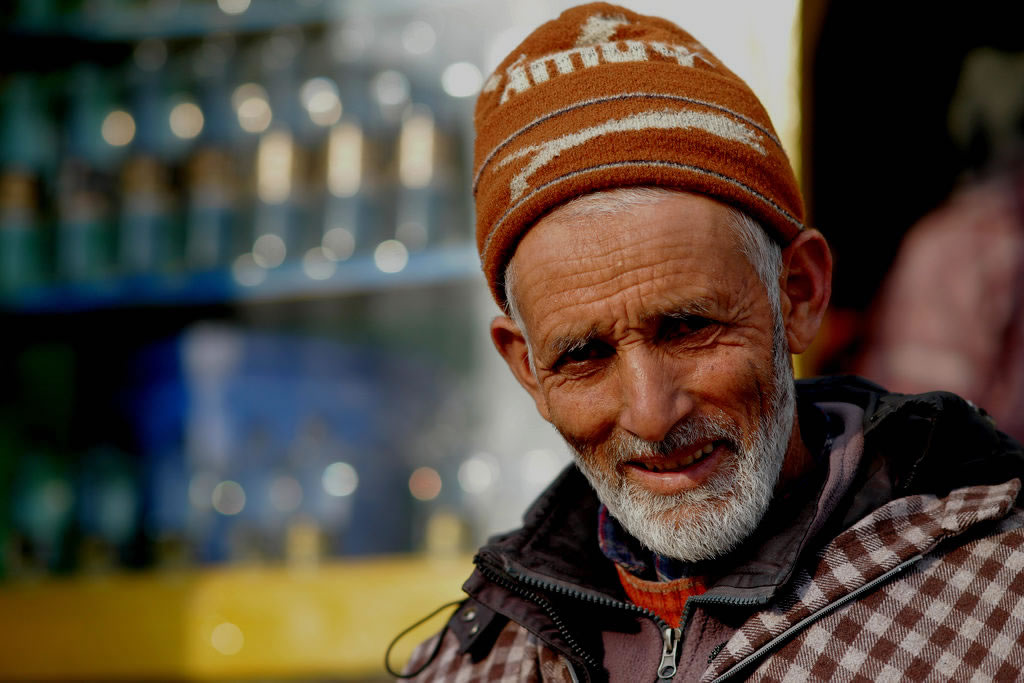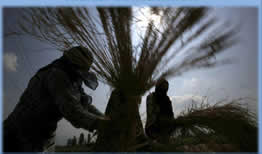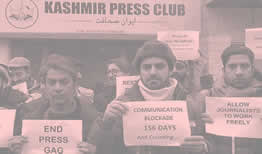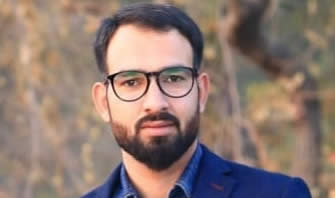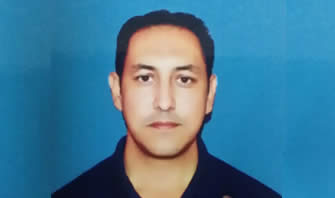Kashmir Conflict: Social Media’s Impact on Conflict Perception and Resolution
Kashmir Conflict: Social Media’s Impact on Conflict Perception and Resolution
Introduction
Conflict is a social construct,
and social media has changed the way conflicts are viewed and managed globally,
such as the territorial conflict between India and Pakistan on the Kashmir
issue. The use of social media sites such as Facebook, Twitter, and YouTube has
brought about a shift in the manner in which information on the topical issue
of the conflict in the Kashmir region is constructed and reconstructed by
different players in the process. The transformation this brings to political
mobilization, activism, and the overarching processes of conflict
transformation is massive.
Submitted by: muqadas
Discipline: PCS-7 University: National Defence University
The Kashmir issue can be traced
back to 1947 when British India was divided into India and Pakistan, and the
two neighbors have been engaged in a political struggle over this matter. For a
long time, the stories of the conflict have been framed by state elites and
shared through media channels depending on the country and region. These media
houses, most of which function as mouthpieces of the state, have had the
responsibility of setting the social tone, more often than not, through skewed
or partisan reporting. The traditional media in the conflict has most times
acted as an echo chamber where the parties to the conflict are only presented
with views that they already hold, thus not helping in the search for a
solution.
This research will initially explain a brief history of the Kashmir conflict, then it will explain how social media came into being and is challenging the rules of the world. Then this research will relate the rise of social media to the conflict perception and resolution in Kashmir.
The Advent of Social Media and
Its Impact
Given the fact that social
networking sites have become popular in the current generation, the
dissemination of information has not been the same again. While other media
sources organize the narrative for the audience, social media enables the
general public to be engaged in the process. In the context of the ongoing
conflict in Kashmir, it has meant that the ability to control the narrative, to
mobilize ideas and images, does not lie exclusively with the state or media
organizations. Social media has ensured that the different people of the world,
including the people of Kashmir, have a voice and are able to express
themselves to the rest of the world.
Perhaps one of the most
profound impacts that have been left by social media is in altering the
perception that people have about the Kashmir conflict. With social media
activists and civil society organizations at the forefront, the violation of human
rights in the region has been brought to the public’s attention by campaigns
around the world on behalf of the people of Kashmir. For example, hashtags like
#FreeKashmir and #StandWithKashmir are some examples that have gained global
attention on social media, thereby pressurizing governments to take action.
However, at the same time, the
results of social media on the Kashmir conflict are not all for the better.
These are the same platforms through which people advocating for peace and
justice can speak and at the same time through which fake news, conspiracy
theories, and terrorism promotion are spread. In the case of Kashmir, social
media has been utilized in the dissemination of fake news, calls for violence,
and extremism. Due to the nature of these media as social, the sharing of
information has been made very easy through them, and this has led to the
circulation of many versions, most of which are half-baked.
Narrative Building and
Stakeholder Perceptions
What people of different stakes
are building on social media about the Kashmir conflict is different. For
instance, the Indian government and its allies actively employ social media
platforms to present a narrative that focuses on the region’s absorption into
India and portrays the situation as an act of terrorism threatening the entire
nation. Such a narrative is backed by social media activities, such as the
activities of militant groups in the territory of Kashmir and the necessity of
tightening security.
However, pro-Kashmiri activism
and the activists’ supporters appropriate these platforms to counter the
state’s discursive strategies and insist on the right to self-determination and
human rights violations by the security forces in the region. It aims at
finding international support for the Kashmiri freedom movement by replacing
the terrorism discourse with the racism and colonialism one.
Pakistan, being one of the main
interested parties, also employs social media to advance its agenda , the idea
of Kashmir’s freedom and the denial of which by India. Most Pakistani social
media campaigns remind the world of the UN resolutions that demand
self-determination for the people of Kashmir.
Social Media's Role in
Political Mobilization and Activism
Besides, social media has also
been defining the political demonstrations and activism in the Indian Illegally
Occupied Jammu and Kashmir (IIOJK). The platforms have made it easier to share
information within a short span of time and also to coordinate protests both
online and offline. For instance, the revocation of the special position of the
region by the Indian government in August 2019 led to large demonstrations
through the use of social media.
The efficiency of Facebook and
other platforms to share messages and attract more people has increased the role
of social media in the activism of Kashmir. But this power has also placed it
in the crosshairs of government repression. The Indian government has often
used internet blackouts in the region, especially during times of tension, in
order to prevent the growth of dissent and to keep the narrative in check.
Conflict Resolution and the
Potential of Social Media
The present social media can
intensify conflicts by promoting fake news and provoking enmity, while at the
same time, it has prospects for peacemaking. The platforms can help in direct
communication between the conflicting parties, help in the sharing of ideas,
and can help in increasing understanding of the conflict. Addressing the case
of Kashmir, social media can be employed to bring people together for the
purpose of debating how the conflict can be resolved without violence. However,
for social media to contribute positively to conflict solving, the information
posted on the various sites has to be the right one. This is why combating
disinformation and improving the level of digital literacy are important
activities. Furthermore, social media should be employed to promote only those
persons who support peace and reunification, as opposed to those who encourage
violence.
Therefore, the role of social
media is evident in the manner in which the stakeholders of the Kashmir
conflict present their narratives. Hence, through sharing information via
social media, it has empowered the voiceless to come out and brought the issue
of Kashmir to the international community. But the same technology that can be
used to support peace and justice is the same that can be used to disseminate
fake news and even worsen the existing gaps. Hence, while social media may be
employed in the process of conflict resolution, its place in the Kashmir
conflict is not unambiguous and cannot be fully reduced to a simple discourse,
as it may indicate both the possibilities and the problems that come with the
increased use of social media in the modern world.
Thus, false information and
propaganda on social networks pose a serious threat to conflict transformation
in the area of Kashmir. All these strategies, which are common to different
sides, exacerbate people’s perceptions and make the search for peace more
difficult. Misinformation is defined as the process of providing wrong
information to the public or the general public unintentionally, while
disinformation is the act of passing wrong information deliberately, knowing it
is fake. While propaganda is more of a systematic campaign for a particular
political line of thinking by putting forward half-truths or misinformation. In
the context of Kashmir, these tools have been used extensively to frame
narratives, mobilize support for particular causes, and discredit the other
side’s narrative.
The use of fake news on social
media platforms has created a half-baked and heavily biased perception about
the issue of Kashmir. The real narrative has been replaced with fake news,
which can be spread by artificial intelligence bots or politically influenced
accounts. For example, fake news stories about acts of aggression or
overemphasized stories of oppression and maltreatment can nurture feelings of
resentment and hatred and therefore push people to acts of aggression and
violence. Such strategies not only increase the level of the conflict but also
prevent the parties from achieving a consensus – people are more motivated to
stick to their positions when they are fed misinformation or misperceptions.\
Propaganda aggravates the
conditions by imposing stereotyped narratives that deny the very right of the
other party to complain or have an agenda. The use of propaganda in Kashmir is
prevalent both at the official level by both Indian and Pakistani states and at
the non-official level by any anti-state or secessionist group. This creates a
very explosive environment where any effort to talk or reason is viewed as an
act of treason. The constant reposting, retweeting, and sharing of narratives
that fuel conflict undermines trust between conflicting factions, hence
hindering any diplomatic effort to agree on a common platform for negotiation.
Further, mis- and
disinformation interfere with the credibility of truthful information and the
work of diplomacy and peacemaking. It becomes very difficult for the public to
know which is which when they are being fed half-truths and mixed signals. This
engulfs society in a culture of pessimism and negativity, and any genuine
attempts at reaching out for peace are met with a lot of suspicion, with anyone
who seeks to broker a deal being deemed to have been pre-programmed or
brainwashed. Consequently, the social structure weakens, and the chances for
nonviolent conflict resolution decrease.
Nevertheless, the negative
aspects of the manipulation of information on social media can also have an
indirect positive effect inasmuch as it brings out the essence and importance
of digital literacy and fact-checking. Since the spread of fake news and fake
information is increasing, much more attention is being paid to them in view of
the threats they create for peace processes. This has resulted in the emergence
of programs that seek to foster media literacy, critical thinking, and
sustainable independent journalism. In the case of such efforts in Kashmir,
they need to be seen as instrumental in creating a civil society that is better
informed, able to differentiate between facts and myths, and one that can
champion the cause of real peace and reconciliation.
Thus, speaking about the challenges related to the conflict in Kashmir, the reliance on misinformation, disinformation, and propaganda on social networks is one of the most significant issues, and at the same time, it is essential to focus on the development of digital literacy. In the case of the conflict over Kashmir, it is pertinent to ensure that the population is not fed fake news that might worsen the situation and prevent the search for a peaceful solution by taking into account everyone’s legitimate interests. It is only possible if the problem of misrepresentation is solved and the informed public is encouraged to make use of social networks on behalf of peace, not war.
Social Media and Political
Mobilisation in IIOJK
Based on the findings, the
hypothesis that increased use of social media has positively affected political
mobilization and activism in IIOJK is affirmed. The Kashmir dispute, which has
witnessed territorial and political violations as well as gross human rights
violations, has witnessed a new dimension through social media. These platforms
have not only brought a free flow of information but also equipped the people
of Kashmir with instruments to come together, raise their issues, and protest
in ways they could only have dreamed of in the past.
Breaking the Information
Blockade
Probably, the most notable
impact of social media on political activation in IIOJK is the dismantling of
the information blockade that has been put in place by the Indian state. The
Indian government has, over the years, applied a lot of pressure on the
circulation of information in the region by employing censorship, media
blackouts, and internet shutdowns. The major conventional media, both national
and international, have sometimes been alleged of partiality or biased
reporting, which very often resulted in the relegation of the Kashmiri
narrative on the conflict. But social media has changed this managed
storytelling by giving voice to the ordinary citizens of Kashmir to report
their experiences and complaints directly to the world in real-time.
Modern social networks like Twitter,
Facebook, Instagram, and others have become effective instruments to deliver
information regarding the situation in IIOJK. These platforms are used by
activists and citizens to convey incidents of human rights violations, military
operations, and protests, with videos/photographs as evidence. While this
formula has probably produced some disinformation from the ground, it has also
disrupted official narratives and informed the world about the people of
Kashmir. In this way, social media has not only served the purpose of educating
global society but also has allowed Kashmiris to come to the forefront and
fight against the narrative being dictated by the state.
Organizing and Mobilizing
Protests
Another way in which social
media has been vital in IIOJK is in the coordination and mobilization of
protests. The platforms allow activists to brainstorm on their activities,
strategize on their campaigns, and recruit supporters domestically and
internationally in the region’s diaspora. This has been most noticeable during
periods of rising tensions. For instance, when in August 2019, the Government
of India revoked the special autonomy of the area through the repeal of Article
370. Following this decision, people took to social media platforms to call for
more protests. Both online and offline protests were called by Kashmiris as
they tried to unswervingly refuse the Indian government’s unilateral decision,
which they perceive as unlawful and unfair.
Some of the hashtags used are
#StandWithKashmir, #KashmirUnderSiege, and #FreeKashmir, which have been used
to support the Kashmiri cause and to mobilize people. Such digital campaigns
have come in handy for encouraging support, coordinating protests, and creating
solidarity across borders. The communication through social media, rather than
hindering the movement, has afforded the Kashmiri resistance fast ways of
sharing information and coordinating actions to respond to actions of the
state, thus adding more vigor to their struggle.
In addition, social media has
also resulted in new forms of activism that could not be experienced before.
Such digital activism, or ‘slacktivism,’ also enables a person to be associated
with the movement through online signatures, sharing of information, and
debates, albeit not physically in IIOJK. This has gone further to enable many
people from different parts of the world to support the Kashmiri struggle in
one way or another. The global feature of social media has also helped to
mobilize international organizations, individuals, parties, and movements all
over the world in support of Kashmir and its activists.
Amplifying Voices and Building
Solidarity
The common social networking
sites have also been very instrumental in raising the voices of oppressed
groups in IIOJK. As those who have grown up consuming local media know only too
well, mainstream media in the region tends to exclude the local voice or
distort it in some way; social media allows the people of Kashmir to speak for
themselves and claim their identities. Due to this, women, youth, and minority
groups have been able to write and post their experiences of the conflict they
undergo and articulate issues of concern to them.
For instance, women from
Kashmir have started to use social media to express their experiences of pain
and struggle, which contests the patriarchal framework of understanding the
conflict and calls for more participation in the peace-building process.
Likewise, the youth of IIOJK, especially the stone pelters and protesters, who
are so frequently in confrontation with the security forces, have also taken to
social media to express their anger and dreams. Self-created blogs, vlogs, and
social media accounts of young Kashmiris bear witness to a dream of freedom
that otherwise cannot function within the existing conflict and occupation.
The rise of social media has
also helped Kashmiris to develop a spirit of oneness, both in the valley and
with other Kashmiris who live in different parts of the world. The platforms
have fostered the formation of virtual groups that bring people of Kashmir
together so they can share their stories and fight together. This feeling of
togetherness has been very important in keeping the struggle afloat, especially
in the context where the authorities have unleashed a crackdown on the opposition
and the general populace, alongside the added stress of living in a war zone.
Challenges and Risks
Thus, the role of social media
in political mobilization and activism in IIOJK cannot be denied; however, it
is crucial to understand the difficulties and dangers associated with the use
of social media. The Indian government has woken up to the realization of this
fact and has since acted by implementing what can be termed as countermeasures
against social media. These include the prevention and slowing down of internet
access, which are among the longest and most severe in the world, as well as
the surveillance and harassment of users of social networks. The people of
IIOJK are arrested, threatened, and assaulted for their participation on social
media, making it a bittersweet tool for freedom fighters.
Furthermore, the same social
media that helps in the mobilization of political actors can also be used for
the creation of fake news, fake information, and propaganda, as illustrated
earlier. In the case of IIOJK, this has occurred when the government has sought
to target those supporting the freedom struggle through character assassination
or attempts to create division amongst the supporters. The appearance of fake
news and terrorist propaganda on social media may deepen the conflict and cause
new waves of violence, thus hindering the possibility of a peaceful settlement
of the conflict.
Conclusion
It can be concluded that
political mobilization and activism have increased notably through the use of
social media platforms in IIOJK, which supports the hypothesis about the
positive impact of social media on the region. Thus, social media has helped
the Kashmiri people to end the information blockade, coordinate protests,
promote the voices of the oppressed, and foster solidarity to fight the state’s
oppression despite all the odds. Nevertheless, the dangers and threats
connected with the use of social networks, government repression, and fake news
show the essential nontriviality of digital activism in the context of the
conflict. Nevertheless, social media continues to be an effective instrument in
the fight for liberty and justice in IIOJK, constructively reorienting the
political uprising and seeking peace in one of the most unstable territories of
the world.
References
Ahmad,
Jalis. “The Impact of Social Media on Political Mobilization and Public Opinion
in India.” International Journal of Engineering, Science, Technology and
Innovation (IJESTI) 3, no. 9 (2023): 40–43.
Justice
For All. “Free Kashmir - Justice for All,” June 19, 2020.
https://www.justiceforall.org/free-kashmir/.
Haidar,
Reiss. “Understanding Disinformation and Propaganda on Kashmir - Portmir
Foundation.” Portmir Foundation, February 12, 2018.
https://www.portmir.org.uk/featured/understanding-disinformation-propaganda-kashmir/.
Hernández,
Rafael. “The Media and Conflict: Case Study Overview Reporting on the Kashmir
Conflict between India and Pakistan.” Global Media Journal Australia 18,
no. 34 (January 1, 2020): 1–4.
Jafri,
Qamar. “Conflict and Social Media: Activism of Civil Society for Peace between
India-Pakistan,” 2020.
https://www.kpsrl.org/sites/default/files/2020-08/t-pb-70_qamar-jafri_conflict-and-social-media.pdf.
Makatlal,
Vankanavath, and Deepak Kumar. “The Impact of Social Media on Political
Mobilization and Activism.” International Journal of Research Publication
and Reviews 3, no. 11 (November 2022): 3468–70.
McKeon,
Robin Tamarelli, and Drew H. Gitomer. “Social Media, Political Mobilization,
and High-Stakes Testing.” Frontiers in Education 4 (June 11, 2019).
doi:https://doi.org/10.3389/feduc.2019.00055.
Nadaf
, Arif Hussain . “Digital Dissent and Censorship in the Kashmir Conflict.” In Platforms,
Protests, and the Challenge of Networked Democracy, edited by John Jones
and Michael Trice. Cham, Switzerland: Palgrave Macmillan, 2020.
Peszko,
Kamila. “Social Media Popularity among Different Generations.” Marketing I Zarządzanie 45 (2016): 361–70.
doi:https://doi.org/10.18276/miz.2016.45-32.
Raja,
Wasim Khalid. “Media
Propaganda and the Kashmir Dispute: A Case Study of the Kashmir Floods.” Reuters
Institute for the Study of Journalism, 2014.
https://reutersinstitute.politics.ox.ac.uk/our-research/media-propaganda-and-kashmir-dispute-case-study-kashmir-floods.
Rajgarhia,
Sanjana. “Media Manipulation in the Indian Context: An Analysis of
Kashmir-Related Discourse on Twitter.” M-RCBG Associate Working Paper Series
147 (2020): 3–53.
Ram,
Ashu. “Social Media and Political Activism in India: A Content Analysis of
Online Movements.” International Research Journal of Humanities and
Interdisciplinary Studies (IRJHIS) 5, no. 5 (2024): 35–45.
Schofield,
Victoria. Kashmir in Conflict : India, Pakistan and the Unending War.
London: Tauris, 2010.
Zeitzoff,
Thomas. “How Social Media Is Changing Conflict.” Journal of Conflict
Resolution 61, no. 9 (August 4, 2017): 1970–91.
doi:https://doi.org/10.1177/0022002717721392.
Related Research Papers
